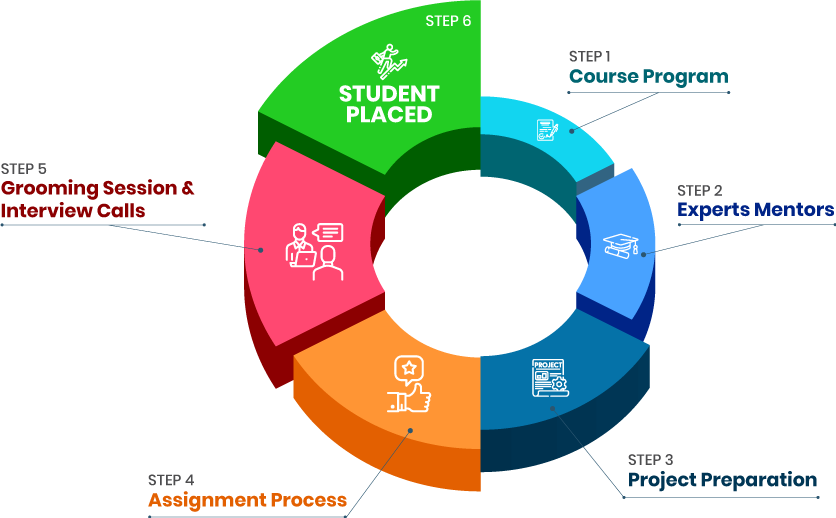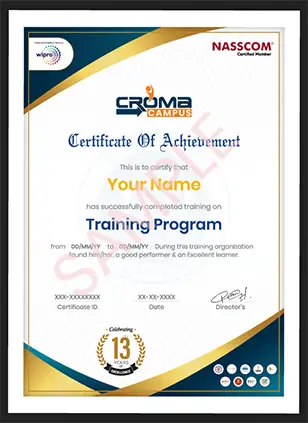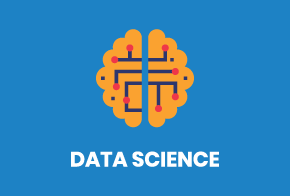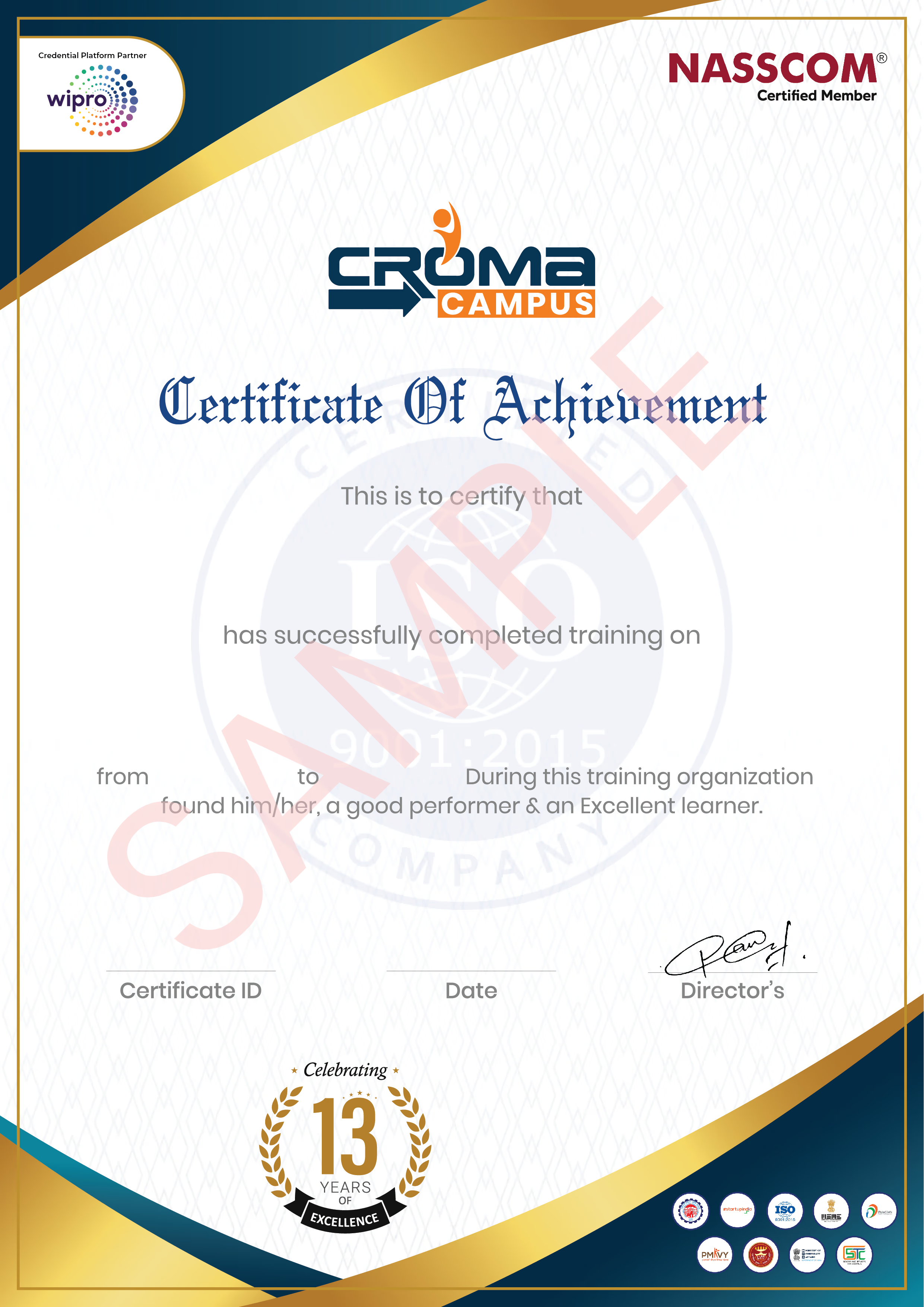- Data Science training in Chandigarh provides essential skills and knowledge for aspiring data scientists, covering machine learning, statistical analysis, data visualization, and programming in Python and R.
- A Data Science course in Chandigarh offers a blend of theoretical understanding and practical experience. The curriculum is designed to prepare participants for roles like data analysts, data engineers, and data scientists, with a focus on solving real-world problems and making data-driven decisions.
- Attending a top Data Science institute in Chandigarh gives access to expert faculty, state-of-the-art resources, and the latest industry practices. These institutes emphasize a balanced approach of classroom instruction and hands-on projects, helping students build a strong portfolio.
- Enrolling in Data Science training in Chandigarh connects students to a growing tech community and a robust job market, providing numerous career opportunities. The comprehensive education and practical experience gained from a reputable Data Science institute in Chandigarh significantly enhance career prospects in the data science field.
- Data Science training in Chandigarh aims to develop highly skilled data professionals through a focused curriculum. The key objectives of this training are:
- By focusing on these objectives, Data Science training in Chandigarh prepares individuals to excel in various data science roles across multiple industries.
Core Knowledge Acquisition: Impart a thorough understanding of essential data science concepts such as machine learning, data mining, and big data technologies.
Programming Mastery: Ensure proficiency in data science programming languages like Python and R, crucial for data manipulation and analysis.
Practical Skills Development: Emphasize hands-on learning through real-world projects and case studies, fostering practical experience.
Analytical Competence: Enhance participants' ability to analyse complex datasets and derive actionable insights.
Industry Alignment: Tailor the curriculum to meet current industry demands, making graduates ready for immediate employment.
Problem-Solving Aptitude: Strengthen the ability to tackle data-driven problems and devise innovative solutions.
Certification Readiness: Equip participants with the knowledge and skills needed to successfully pass advanced data science certification exams.
Career Enhancement: Improve career prospects by training participants for high-demand roles such as data scientist, data analyst, and data engineer.
- Completing Data Science training in Chandigarh can significantly boost your earning potential. Here are typical salary ranges for various roles:
- These salaries can vary based on factors like prior experience, employer, and industry, making Data Science training in Chandigarh a valuable investment for career growth.
Data Analyst: INR 3 to 5 lakhs per annum for entry-level; INR 6 to 8 lakhs per annum with experience.
Data Scientist: INR 6 to 8 lakhs per annum for entry-level; INR 10 to 15 lakhs per annum for experienced professionals.
Data Engineer: INR 4 to 6 lakhs per annum for entry-level; INR 8 to 12 lakhs per annum for experienced IT professionals.
Machine Learning Engineer: INR 5 to 7 lakhs per annum for entry-level; INR 10 to 18 lakhs per annum with experience.
Business Intelligence Analyst: INR 3 to 5 lakhs per annum for entry-level; INR 6 to 10 lakhs per annum with experience.
- Completing Data Science coaching in Chandigarh greatly improves career prospects by providing essential skills and numerous opportunities:
Open to roles like data analyst, data scientist, and machine learning engineer.
Competitive salaries for both beginners and experienced professionals.
Master data analysis, machine learning, and data visualization.
Job opportunities in IT, finance, healthcare, retail, and more.
Equipped for advanced data science certifications.
Pathway to senior roles like data science manager or chief data officer.
- A Data Science Online Course is popular because the Country is becoming a major tech centre, leading to a high demand for data professionals. Chandigarh has many good institutes that offer detailed courses, teaching important skills like data analysis, machine learning, and data visualization.
- The growing job market in Chandigarh offers great career opportunities in various fields such as IT, finance, healthcare, and retail. Additionally, the attractive salaries for data science jobs make these courses even more appealing.
- Upon completing a Data Science course in Chandigarh, you can expect to take on various roles and responsibilities, including:
Collect and clean large datasets
Analyse data to find trends and patterns
Develop predictive models and machine learning algorithms
Create dashboards and reports to visualize data
Collaborate with stakeholders to understand data needs
Monitor and refine models for optimal performance
Document methodologies and results
Stay updated with the latest data science techniques
Ensure data privacy and compliance
Mentor and train junior data scientists
- Enrolling in a Data Science course in Chandigarh at a top Data Science institute in Chandigarh can significantly advance your career. Here are the main industries seeking data scientists in Chandigarh:
Information Technology (IT) - Emphasizing data-driven decision-making.
E-commerce - Enhancing supply chain efficiency and customer personalization.
Healthcare - Advancing diagnostic procedures and healthcare management.
Finance and Banking - Implementing fraud prevention and predictive modeling.
Education - Developing personalized learning paths and improving academic outcomes.
Telecommunications - Optimizing customer data insights and network performance.
Manufacturing - Ensuring predictive upkeep and optimizing production lines.
Retail - Gaining insights into consumer preferences and stock control.
Travel and Tourism - Refining customer journeys and optimizing pricing models.
Real Estate - Conducting market trend analysis and property valuation forecasts.
- Upon finishing the Data Science Certification Course, you will earn a certificate of completion. This intensive program includes vital areas of Data Science, such as:
- The certificate confirms your proficiency in these subjects, showcasing your ability to work with data effectively for strategic insights. This globally acknowledged certificate is a mark of your expertise in Data Science. Additionally, it enables you to apply for relevant Data Science certification exams, enhancing your professional qualifications and career opportunities.
Machine Learning
Statistical Analysis
Data Visualization
Programming in Python/R
- You May Also Read:
Why should You learn Data Science?
By registering here, I agree to Croma Campus Terms & Conditions and Privacy Policy
 Course Duration
Course Duration
160 Hrs.
Flexible Batches For You
26-Apr-2025*
- Weekend
- SAT - SUN
- Mor | Aft | Eve - Slot
28-Apr-2025*
- Weekday
- MON - FRI
- Mor | Aft | Eve - Slot
23-Apr-2025*
- Weekday
- MON - FRI
- Mor | Aft | Eve - Slot
26-Apr-2025*
- Weekend
- SAT - SUN
- Mor | Aft | Eve - Slot
28-Apr-2025*
- Weekday
- MON - FRI
- Mor | Aft | Eve - Slot
23-Apr-2025*
- Weekday
- MON - FRI
- Mor | Aft | Eve - Slot
Course Price :
Timings Doesn't Suit You ?
We can set up a batch at your convenient time.
Program Core Credentials
Trainer Profiles
Industry Experts
Trained Students
10000+
Success Ratio
100%
Corporate Training
For India & Abroad
Job Assistance
100%
Batch Request
FOR QUERIES, FEEDBACK OR ASSISTANCE
Contact Croma Campus Learner Support
Best of support with us
CURRICULUM & PROJECTS
Data Science Certification Training
- Creation of Excel Sheet Data
- Range Name, Format Painter
- Conditional Formatting, Wrap Text, Merge & Centre
- Sort, Filter, Advance Filter
- Different type of Chart Creations
- Auditing, (Trace Precedents, Trace Dependents)Print Area
- Data Validations, Consolidate, Subtotal
- What if Analysis (Data Table, Goal Seek, Scenario)
- Solver, Freeze Panes
- Various Simple Functions in Excel(Sum, Average, Max, Min)
- Real Life Assignment work
- Advance Data Sorting
- Multi-level sorting
- Restoring data to original order after performing sorting
- Sort by icons
- Sort by colours
- Lookup Functions
- Lookup
- VLookup
- HLookup
- Subtotal, Multi-Level Subtotal
- Grouping Features
- Column Wise
- Row Wise
- Consolidation With Several Worksheets
- Filter
- Auto Filter
- Advance Filter
- Printing of Raw & Column Heading on Each Page
- Workbook Protection and Worksheet Protection
- Specified Range Protection in Worksheet
- Excel Data Analysis
- Goal Seek
- Scenario Manager
- Data Table
- Advance use of Data Tables in Excel
- Reporting and Information Representation
- Pivot Table
- Pivot Chat
- Slicer with Pivot Table & Chart
- Generating MIS Report In Excel
- Advance Functions of Excel
- Math & Trig Functions
- Text Functions
- Lookup & Reference Function
- Logical Functions & Date and Time Functions
- Database Functions
- Statistical Functions
- Financial Functions
- Functions for Calculation Depreciation
- SQL Server 2019 Installation
- Service Accounts & Use, Authentication Modes & Usage, Instance Congurations
- SQL Server Features & Purpose
- Using Management Studio (SSMS)
- Conguration Tools & SQLCMD
- Conventions & Collation
- SQL Database Architecture
- Database Creation using GUI
- Database Creation using T-SQL scripts
- DB Design using Files and File Groups
- File locations and Size parameters
- Database Structure modications
- SQL Server Database Tables
- Table creation using T-SQL Scripts
- Naming Conventions for Columns
- Single Row and Multi-Row Inserts
- Table Aliases
- Column Aliases & Usage
- Table creation using Schemas
- Basic INSERT
- UPDATE
- DELETE
- SELECT queries and Schemas
- Use of WHERE, IN and BETWEEN
- Variants of SELECT statement
- ORDER BY
- GROUPING
- HAVING
- ROWCOUNT and CUBE Functions
- Table creation using Constraints
- NULL and IDENTITY properties
- UNIQUE KEY Constraint and NOT NULL
- PRIMARY KEY Constraint & Usage
- CHECK and DEFAULT Constraints
- Naming Composite Primary Keys
- Disabling Constraints & Other Options
- Benets of Views in SQL Database
- Views on Tables and Views
- SCHEMA BINDING and ENCRYPTION
- Issues with Views and ALTER TABLE
- Common System Views and Metadata
- Common Dynamic Management views
- Working with JOINS inside views
- Need for Indexes & Usage
- Indexing Table & View Columns
- Index SCAN and SEEK
- INCLUDED Indexes & Usage
- Materializing Views (storage level)
- Composite Indexed Columns & Keys
- Indexes and Table Constraints
- Primary Keys & Non-Clustered Indexes
- Why to use Stored Procedures
- Types of Stored Procedures
- Use of Variables and parameters
- SCHEMABINDING and ENCRYPTION
- INPUT and OUTPUT parameters
- System level Stored Procedures
- Dynamic SQL and parameterization
- Scalar Valued Functions
- Types of Table Valued Functions
- SCHEMABINDING and ENCRYPTION
- System Functions and usage
- Date Functions
- Time Functions
- String and Operational Functions
- ROW_COUNT
- GROUPING Functions
- Why to use Triggers
- DML Triggers and Performance impact
- INSERTED and DELETED memory tables
- Data Audit operations & Sampling
- Database Triggers and Server Triggers
- Bulk Operations with Triggers
- Cursor declaration and Life cycle
- STATIC
- DYNAMIC
- SCROLL Cursors
- FORWARD_ONLY and LOCAL Cursors
- KEYSET Cursors with Complex SPs
- ACID Properties and Scope
- EXPLICIT Transaction types
- IMPLICIT Transactions and options
- AUTOCOMMIT Transaction and usage
- Overview of BI concepts
- Why we need BI
- Introduction to SSBI
- SSBI Tools
- Why Power BI
- What is Power BI
- Building Blocks of Power BI
- Getting started with Power BI Desktop
- Get Power BI Tools
- Introduction to Tools and Terminology
- Dashboard in Minutes
- Interacting with your Dashboards
- Sharing Dashboards and Reports
- Power BI Desktop
- Extracting data from various sources
- Workspaces in Power BI
- Data Transformation
- Query Editor
- Connecting Power BI Desktop to our Data Sources
- Editing Rows
- Understanding Append Queries
- Editing Columns
- Replacing Values
- Formatting Data
- Pivoting and Unpivoting Columns
- Splitting Columns
- Creating a New Group for our Queries
- Introducing the Star Schema
- Duplicating and Referencing Queries
- Creating the Dimension Tables
- Entering Data Manually
- Merging Queries
- Finishing the Dimension Table
- Introducing the another DimensionTable
- Creating an Index Column
- Duplicating Columns and Extracting Information
- Creating Conditional Columns
- Creating the FACT Table
- Performing Basic Mathematical Operations
- Improving Performance and Loading Data into the Data Model
- Introduction to Modelling
- Modelling Data
- Manage Data Relationship
- Optimize Data Models
- Cardinality and Cross Filtering
- Default Summarization & Sort by
- Creating Calculated Columns
- Creating Measures & Quick Measures
- What is DAX
- Data Types in DAX
- Calculation Types
- Syntax, Functions, Context Options
- DAX Functions
- Date and Time
- Time Intelligence
- Information
- Logical
- Mathematical
- Statistical
- Text and Aggregate
- Measures in DAX
- Measures and Calculated Columns
- ROW Context and Filter Context in DAX
- Operators in DAX - Real-time Usage
- Quick Measures in DAX - Auto validations
- In-Memory Processing DAX Performance
- How to use Visual in Power BI
- What Are Custom Visuals
- Creating Visualisations and Colour Formatting
- Setting Sort Order
- Scatter & Bubble Charts & Play Axis
- Tooltips and Slicers, Timeline Slicers & Sync Slicers
- Cross Filtering and Highlighting
- Visual, Page and Report Level Filters
- Drill Down/Up
- Hierarchies and Reference/Constant Lines
- Tables, Matrices & Conditional Formatting
- KPI's, Cards & Gauges
- Map Visualizations
- Custom Visuals
- Managing and Arranging
- Drill through and Custom Report Themes
- Grouping and Binning and Selection Pane, Bookmarks & Buttons
- Data Binding and Power BI Report Server
- Why Dashboard and Dashboard vs Reports
- Creating Dashboards
- Conguring a Dashboard Dashboard Tiles, Pinning Tiles
- Power BI Q&A
- Quick Insights in Power BI
- Custom Data Gateways
- Exploring live connections to data with Power BI
- Connecting directly to SQL Server
- Connectivity with CSV & Text Files
- Excel with Power BI Connect Excel to Power BI, Power BI Publisher for Excel
- Content packs
- Update content packs
- Introduction and Sharing Options Overview
- Publish from Power BI Desktop and Publish to Web
- Share Dashboard with Power BI Service
- Workspaces (Power BI Pro) and Content Packs (Power BI Pro)
- Print or Save as PDF and Row Level Security (Power BI Pro)
- Export Data from a Visualization
- Export to PowerPoint and Sharing Options Summary
- Understanding Data Refresh
- Personal Gateway (Power BI Pro and 64-bit Windows)
- Replacing a Dataset and Troubleshooting Refreshing
- Installation and Working with Python
- Understanding Python variables
- Python basic Operators
- Understanding the Python blocks.
- Python Comments, Multiline Comments.
- Python Indentation
- Understating the concepts of Operators
- Arithmetic
- Relational
- Logical
- Assignment
- Membership
- Identity
- Variables, expression condition and function
- Global and Local Variables in Python
- Packing and Unpacking Arguments
- Type Casting in Python
- Byte objects vs. string in Python
- Variable Scope
- Declaring and using Numeric data types
- Using string data type and string operations
- Understanding Non-numeric data types
- Understanding the concept of Casting and Boolean.
- Strings
- List
- Tuples
- Dictionary
- Sets
- Statements - if, else, elif
- How to use nested IF and Else in Python
- Loops
- Loops and Control Statements.
- Jumping Statements - Break, Continue, pass
- Looping techniques in Python
- How to use Range function in Loop
- Programs for printing Patterns in Python
- How to use if and else with Loop
- Use of Switch Function in Loop
- Elegant way of Python Iteration
- Generator in Python
- How to use nested Loop in Python
- Use If and Else in for and While Loop
- Examples of Looping with Break and Continue Statement
- How to use IN or NOT IN keyword in Python Loop.
- What is List.
- List Creation
- List Length
- List Append
- List Insert
- List Remove
- List Append & Extend using "+" and Keyword
- List Delete
- List related Keyword in Python
- List Reverse
- List Sorting
- List having Multiple Reference
- String Split to create a List
- List Indexing
- List Slicing
- List count and Looping
- List Comprehension and Nested Comprehension
- What is Tuple
- Tuple Creation
- Accessing Elements in Tuple
- Changing a Tuple
- Tuple Deletion
- Tuple Count
- Tuple Index
- Tuple Membership
- TupleBuilt in Function (Length, Sort)
- Dict Creation
- Dict Access (Accessing Dict Values)
- Dict Get Method
- Dict Add or Modify Elements
- Dict Copy
- Dict From Keys.
- Dict Items
- Dict Keys (Updating, Removing and Iterating)
- Dict Values
- Dict Comprehension
- Default Dictionaries
- Ordered Dictionaries
- Looping Dictionaries
- Dict useful methods (Pop, Pop Item, Str , Update etc.)
- What is Set
- Set Creation
- Add element to a Set
- Remove elements from a Set
- PythonSet Operations
- Frozen Sets
- What is Set
- Set Creation
- Add element to a Set
- Remove elements from a Set
- PythonSet Operations
- Python Syntax
- Function Call
- Return Statement
- Arguments in a function - Required, Default, Positional, Variable-length
- Write an Empty Function in Python -pass statement.
- Lamda/ Anonymous Function
- *args and **kwargs
- Help function in Python
- Scope and Life Time of Variable in Python Function
- Nested Loop in Python Function
- Recursive Function and Its Advantage and Disadvantage
- Organizing python codes using functions
- Organizing python projects into modules
- Importing own module as well as external modules
- Understanding Packages
- Random functions in python
- Programming using functions, modules & external packages
- Map, Filter and Reduce function with Lambda Function
- More example of Python Function
- Creation and working of decorator
- Idea and practical example of generator, use of generator
- Concept and working of Iterator
- Python Errors and Built-in-Exceptions
- Exception handing Try, Except and Finally
- Catching Exceptions in Python
- Catching Specic Exception in Python
- Raising Exception
- Try and Finally
- Opening a File
- Python File Modes
- Closing File
- Writing to a File
- Reading from a File
- Renaming and Deleting Files in Python
- Python Directory and File Management
- List Directories and Files
- Making New Directory
- Changing Directory
- Threading, Multi-threading
- Memory management concept of python
- working of Multi tasking system
- Different os function with thread
- SQL Database connection using
- Creating and searching tables
- Reading and Storing cong information on database
- Programming using database connections
- Working With Excel
- Reading an excel le using Python
- Writing to an excel sheet using Python
- Python| Reading an excel le
- Python | Writing an excel le
- Adjusting Rows and Column using Python
- ArithmeticOperation in Excel le.
- Play with Workbook, Sheets and Cells in Excel using Python
- Creating and Removing Sheets
- Formatting the Excel File Data
- More example of Python Function
- Check Dirs. (exist or not)
- How to split path and extension
- How to get user prole detail
- Get the path of Desktop, Documents, Downloads etc.
- Handle the File System Organization using OS
- How to get any les and folder's details using OS
- What is Machine Learning
- Machine Learning Use-Cases
- Machine Learning Process Flow
- Machine Learning Categories
- What is Time Series Analysis
- Importance of TSA
- Components of TSA
- White Noise
- AR model
- MA model
- ARMA model
- ARIMA model
- Stationarity
- ACF & PACF
- What is Exploratory Data Analysis
- EDA Techniques
- EDA Classification
- Univariate Non-graphical EDA
- Univariate Graphical EDA
- Multivariate Non-graphical EDA
- Multivariate Graphical EDA
- Heat Maps
- Overview of Text Mining
- Need of Text Mining
- Natural Language Processing (NLP) in Text Mining
- Overview of Text Mining
- Need of Text Mining
- Natural Language Processing (NLP) in Text Mining
- Applications of Text Mining
- OS Module
- Reading, Writing to text and word files
- Setting the NLTK Environment
- Accessing the NLTK Corpora
- Tokenization
- Frequency Distribution
- Different Types of Tokenizers
- Bigrams, Trigrams & Ngrams
- Stemming
- Lemmatization
- Stopwords
- POS Tagging
- Named Entity Recognition
- Syntax Trees
- Chunking
- Chinking
- Context Free Grammars (CFG)
- Automating Text Paraphrasing
- Machine Learning: Brush Up
- Bag of Words
- Count Vectorizer
- Term Frequency (TF)
- Inverse Document Frequency (IDF)
- Introduction to TensorFlow 2.x
- Installing TensorFlow 2.x
- Defining Sequence model layers
- Activation Function
- Layer Types
- Model Compilation
- Model Optimizer
- Model Loss Function
- Model Training
- Digit Classification using Simple Neural Network in TensorFlow 2.x
- Improving the model
- Adding Hidden Layer
- Adding Dropout
- Using Adam Optimizer
- What is Deep Learning
- Curse of Dimensionality
- Machine Learning vs. Deep Learning
- Use cases of Deep Learning
- Human Brain vs. Neural Network
- What is Perceptron
- Learning Rate
- Epoch
- Batch Size
- Activation Function
- Single Layer Perceptron
- What is NN
- Types of NN
- Creation of simple neural network using tensorflow
- Image Classification Example
- What is Convolution
- Convolutional Layer Network
- Convolutional Layer
- Filtering
- ReLU Layer
- Pooling
- Data Flattening
- Fully Connected Layer
- Predicting a cat or a dog
- Saving and Loading a Model
- Face Detection using OpenCV
- Introduction to Vision
- Importance of Image Processing
- Image Processing Challenges – Interclass Variation, ViewPoint Variation, Illumination, Background Clutter, Occlusion & Number of Large Categories
- Introduction to Image – Image Transformation, Image Processing Operations & Simple Point Operations
- Noise Reduction – Moving Average & 2D Moving Average
- Image Filtering – Linear & Gaussian Filtering
- Disadvantage of Correlation Filter
- Introduction to Convolution
- Boundary Effects – Zero, Wrap, Clamp & Mirror
- Image Sharpening
- Template Matching
- Edge Detection – Image filtering, Origin of Edges, Edges in images as Functions, Sobel Edge Detector
- Effect of Noise
- Laplacian Filter
- Smoothing with Gaussian
- LOG Filter – Blob Detection
- Noise – Reduction using Salt & Pepper Noise using Gaussian Filter
- Nonlinear Filters
- Bilateral Filters
- Canny Edge Detector - Non Maximum Suppression, Hysteresis Thresholding
- Image Sampling & Interpolation – Image Sub Sampling, Image Aliasing, Nyquist Limit, Wagon Wheel Effect, Down Sampling with Gaussian Filter, Image Pyramid, Image Up Sampling
- Image Interpolation – Nearest Neighbour Interpolation, Linear Interpolation, Bilinear Interpolation & Cubic Interpolation
- Introduction to the dnn module
- Deep Learning Deployment Toolkit
- Use of DLDT with OpenCV4.0
- OpenVINO Toolkit
- Introduction
- Model Optimization of pre-trained models
- Inference Engine and Deployment process
+ More Lessons
Mock Interviews

Phone (For Voice Call):
+91-971 152 6942WhatsApp (For Call & Chat):
+919711526942SELF ASSESSMENT
Learn, Grow & Test your skill with Online Assessment Exam to
achieve your Certification Goals

FAQ's
Typically ranges from 3 to 6 months.
Machine learning, data visualization, statistical analysis, and Python/R programming.
Consider faculty expertise, course content, and alumni reviews.
High demand in IT, finance, healthcare, and e-commerce industries.
Basic knowledge of programming and statistics is beneficial but not mandatory.

- - Build an Impressive Resume
- - Get Tips from Trainer to Clear Interviews
- - Attend Mock-Up Interviews with Experts
- - Get Interviews & Get Hired
If yes, Register today and get impeccable Learning Solutions!

Training Features
Instructor-led Sessions
The most traditional way to learn with increased visibility,monitoring and control over learners with ease to learn at any time from internet-connected devices.
Real-life Case Studies
Case studies based on top industry frameworks help you to relate your learning with real-time based industry solutions.
Assignment
Adding the scope of improvement and fostering the analytical abilities and skills through the perfect piece of academic work.
Lifetime Access
Get Unlimited access of the course throughout the life providing the freedom to learn at your own pace.
24 x 7 Expert Support
With no limits to learn and in-depth vision from all-time available support to resolve all your queries related to the course.
Certification
Each certification associated with the program is affiliated with the top universities providing edge to gain epitome in the course.
Showcase your Course Completion Certificate to Recruiters
-
Training Certificate is Govern By 12 Global Associations.
-
Training Certificate is Powered by “Wipro DICE ID”
-
Training Certificate is Powered by "Verifiable Skill Credentials"











.webp)




















 Master in Cloud Computing Training
Master in Cloud Computing Training